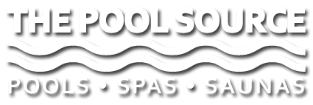3 Steps to a Clear Pool
While you’re splashing around in your pool this summer, don’t forget to pay attention to a little pool-cleaning maintenance. After all, you and your family want to be splashing around in a pool that is clean and clear. What are the steps to a clear pool? It’s easier than you think.
Check out the 3 steps to a clear pool:
1. Sanitize
Why use a sanitizer?
The first step to a clear, clean pool is to sanitize. Why is this so important?
A sanitizer kills bacteria. It also helps to stop viruses and other organic contaminants from growing in your pool.
The most common sanitizer for a pool is chlorine.
In order for chlorine to do its job, it must be kept in the pool at all times. This means that you’re going to have to keep an eye on the chlorine level and replenish it frequently.
Specifically, you need to keep the chlorine at the ideal “free available chlorine” range.
What is “free available chlorine?” This is the chlorine available to kill new bacteria in the pool. Conversely, “combined chlorine” is the chlorine that has been “used up” during the cleaning process. It has already killed bacteria and is, thus, unavailable to kill new bacteria.
The ideal free available chlorine range is usually between 1 and 3 parts per million (ppm).
To find supplies to sanitize your pool, visit the Pool Source.
2. Shock
Why shock your pool?
After using chlorine to sanitize your pool, you must shock it. Why do you need this extra step?
Despite maintaining an adequate, regular level of chlorine in your pool, bacteria and other organic contaminants can sometimes still build up overtime. This will contaminate your pool and make it cloudy.
So, how do you get rid of these contaminants? You quickly raise the level of chlorine in your pool to “shock” it and wipe out the bacteria.
How to shock your pool:
In order to keep your pool clear and clean, you should shock your pool once a week.
It is recommended that you shock your pool on the same day and at the same time each week for regular cleaning.
Also, it is best to shock your pool at night. This way, the shock has time to do its job, and the chemical levels in the pool have a chance to become regular again before you are ready to swim the next day.
After shocking your pool, don’t forget to allow your filter to run for at least one hour.
To find supplies to shock your pool, visit the Pool Source.
3. Prevent algae
Why use algaecide?
The final step to a clear pool is to prevent algae. This is done by using an algaecide.
What happens if you skip this step?
Algae can easily enter into your pool via rain, wind, or the like. And there are many different kinds of algae that can grow in your pool. (Yellow, green, and black are just some of the icky variations of algae that can contaminate your pool.)
When algae starts to take hold and grow in your pool, it can produce a number of ill effects. It can turn the water green, clog the filters, and produce a slime on the pool walls and floor.
An algaecide will help to prevent the growth of algae – and help to get rid of any existing algae.
How to use algaecide:
First, before using algaecide, make sure to clean your pool filter (and don’t forget to complete steps one and two, sanitize and shock!).
For most algaecides, it is usually recommended to apply a larger quantity for the initial application. Then, apply algaecide in smaller quantities intermittently to keep algae at bay.
To find specific amounts for this initial dosage and the succeeding maintenance dosages, see the directions on the bottle of algaecide you decide to use.
To find supplies to algaecide your pool, visit the Pool Source.


